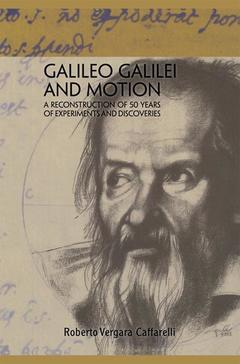Description
Galileo Galilei and Motion, 2009
A Reconstruction of 50 Years of Experiments and Discoveries
Language: English
Subject for Galileo Galilei and Motion:
Publication date: 11-2014
298 p. · 15.5x23.5 cm · Paperback
Publication date: 10-2009
298 p. · 15.5x23.5 cm · Hardback
Description
/li>Contents
/li>Comment
/li>
Among the many books on Galileo Galilei only very few deal directly and in depth with his scientific accomplishments proper. This is one of them and among the correspondingly sparse literature the author of this work distinguishes himself by focusing on mechanics, in particular on the fundamental concept of motion and percussion - having performed crucial original experiments and in Galileo?s spirit. Indeed, while the author lets Galilei speak for himself when he explains his experiments and findings, he also makes full use of our present day knowledge of physics to make the reader better understand the perspective.
The result of this very fine understanding is an unsurpassingly authoritative account on some of the foundations of preclassical mechanics as laid down by the great Pisan scientist, widely regarded as the first experimental physicist in the modern sense.
This book will not only be an indispensable source of reference for historians of sciences but appeal to anyone interested in the foundations of experimental physics in general and of mechanics in particular.




